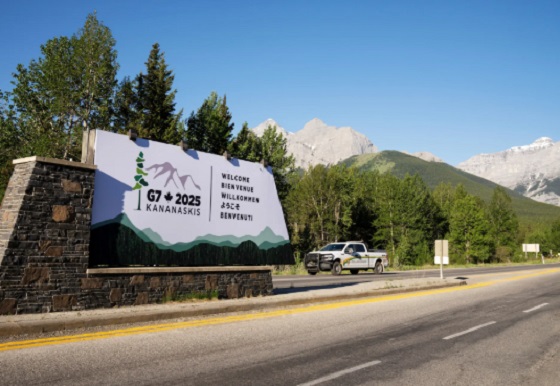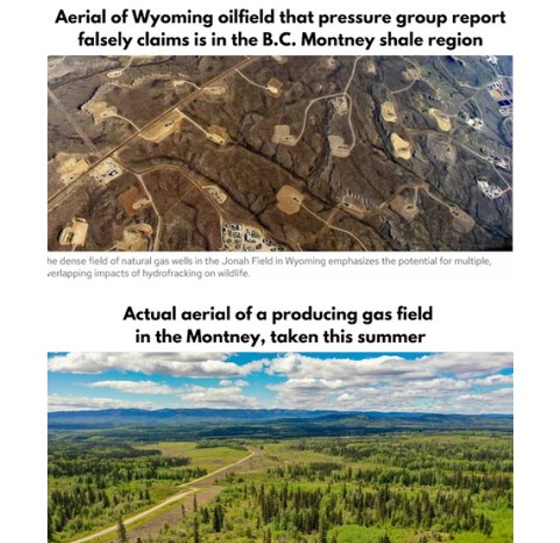Uncategorized
Koreas agree to break ground on inter-Korean railroad

SEOUL, Korea, Republic Of — North and South Korea continued their push for peace Monday with high-level talks that resulted in a host of agreements, including a plan by the rivals for a groundbreaking ceremony this year on an ambitious project to connect their railways and roads.
The agreements come amid unease in Washington over the speed of inter-Korean engagement. Many outsiders believe that U.S.-led efforts to rid the North of its nuclear-tipped missiles are lagging significantly behind the Koreas’ efforts to move past decades of bitter rivalry.
A series of weapons tests by North Korea last year, and an exchange of insults and threats between President Donald Trump and North Korean leader Kim Jong Un, had many on the Korean Peninsula fearing war. But there has since been a surprising peace initiative, with three inter-Korean summits and a June meeting in Singapore between Trump and Kim. The U.S. and North Korea are working on plans for a second such summit.
Still, there is widespread skepticism that North Korea will disarm. And, despite the fanfare for the proposed railway and road projects, the Koreas cannot move much further along without the lifting of international sanctions against North Korea, which isn’t likely to come before it takes firmer steps toward relinquishing its nuclear weapons and missiles.
South Korea’s Unification Ministry, which handles affairs with the North, said in a statement that the government will share details from Monday’s meeting with the United States and other nations and will closely
The ministry said the rivals agreed Monday to hold general-level military talks soon to discuss reducing border tensions and setting up a joint military committee that’s meant to maintain communication and avoid crises and accidental clashes.
The Koreas also agreed to use their newly opened liaison office in the North Korean border town of Kaesong to host talks between sports officials in late October to discuss plans to send combined teams to the 2020 Summer Olympics and to make a push to co-host the 2032 Summer Games.
And the two countries will hold Red Cross talks at North Korea’s Diamond Mountain resort in November to set up video-conference meetings between aging relatives separated by the 1950-53 Korean War and potentially expand face-to-face reunions between them.
Monday’s talks at the border village of Panmunjom were aimed at finding ways to carry out peace agreements announced after a summit last month between South Korean President Moon Jae-in and Kim in the North Korean capital of Pyongyang.
South Korean Unification Minister Cho Myoung-gyon said it was meaningful that the Koreas are getting faster in reaching agreements as their diplomacy gains traction. His North Korean counterpart, Ri Son Gwon, who heads an agency dealing with inter-Korean affairs, said “no group and no force will be able to prevent the path toward peace, prosperity and our nation’s unification.”
At the most recent summit between Moon and Kim, the two leaders committed to reviving economic
They also announced measures to reduce conventional military threats, such as creating buffer zones along their land and sea boundaries and a no-fly zone above the border, removing 11 front-line guard posts by December, and demining sections of the Demilitarized Zone.
Moon has described inter-Korean engagement as crucial to resolving the nuclear standoff and is eager to restart joint economic projects held back by sanctions if the larger nuclear negotiations between the United States and North Korea begin yielding results.
However, South Korea’s enthusiasm for engagement with its rival appears to have created discomfort with the United States, a key ally.
Moon’s government last week walked back a proposal to lift some of its unilateral sanctions against North Korea following Trump’s blunt retort that Seoul could “do nothing” without Washington’s approval.
South Korean Foreign Minister Kang Kyung-wha also said U.S. Secretary of State Mike Pompeo expressed displeasure about the Koreas’ military agreements. Kang was not specific, but her comments fueled speculation that Washington wasn’t fully on board before Seoul signed the agreements.
Trump has encouraged U.S. allies to maintain sanctions on North Korea until it denuclearizes to maintain a campaign of pressure against Kim’s government.
Experts say updating North Korean trains, which use rails that were first laid in the early 20th century, could take decades and cost tens of billions of dollars.
In Monday’s meeting, the Koreas also agreed to conduct joint inspections during late October of the North Korean portion of a railway that once connected Seoul and Sinuiju, before moving on to railways in the eastern section in early November. A groundbreaking ceremony for the project is planned for November or early December.
Originally built by Japan, the Gyeongui line between Seoul and Sinuiju was separated at the end of World War II in 1945, when the Korean Peninsula was liberated from Japanese colonial rule and divided between a U.S.-controlled southern side and a Soviet-controlled north.
The line was briefly reconnected during a previous era of rapprochement between the rivals in the 2000s. The Koreas in December 2007 began freight services between South Korea’s Munsan Station in Paju and North Korea’s Pongdong Station, which is near Kaesong where the Koreas once operated a joint factory park. But the line was cut again in 2008 when a new conservative government took over in Seoul.
Kim Tong-Hyung, The Associated Press
Uncategorized
Kananaskis G7 meeting the right setting for U.S. and Canada to reassert energy ties


Energy security, resilience and affordability have long been protected by a continentally integrated energy sector.
The G7 summit in Kananaskis, Alberta, offers a key platform to reassert how North American energy cooperation has made the U.S. and Canada stronger, according to a joint statement from The Heritage Foundation, the foremost American conservative think tank, and MEI, a pan-Canadian research and educational policy organization.
“Energy cooperation between Canada, Mexico and the United States is vital for the Western World’s energy security,” says Diana Furchtgott-Roth, director of the Center for Energy, Climate and Environment and the Herbert and Joyce Morgan Fellow at the Heritage Foundation, and one of America’s most prominent energy experts. “Both President Trump and Prime Minister Carney share energy as a key priority for their respective administrations.
She added, “The G7 should embrace energy abundance by cooperating and committing to a rapid expansion of energy infrastructure. Members should commit to streamlined permitting, including a one-stop shop permitting and environmental review process, to unleash the capital investment necessary to make energy abundance a reality.”
North America’s energy industry is continentally integrated, benefitting from a blend of U.S. light crude oil and Mexican and Canadian heavy crude oil that keeps the continent’s refineries running smoothly.
Each day, Canada exports 2.8 million barrels of oil to the United States.
These get refined into gasoline, diesel and other higher value-added products that furnish the U.S. market with reliable and affordable energy, as well as exported to other countries, including some 780,000 barrels per day of finished products that get exported to Canada and 1.08 million barrels per day to Mexico.
A similar situation occurs with natural gas, where Canada ships 8.7 billion cubic feet of natural gas per day to the United States through a continental network of pipelines.
This gets consumed by U.S. households, as well as transformed into liquefied natural gas products, of which the United States exports 11.5 billion cubic feet per day, mostly from ports in Louisiana, Texas and Maryland.
“The abundance and complementarity of Canada and the United States’ energy resources have made both nations more prosperous and more secure in their supply,” says Daniel Dufort, president and CEO of the MEI. “Both countries stand to reduce dependence on Chinese and Russian energy by expanding their pipeline networks – the United States to the East and Canada to the West – to supply their European and Asian allies in an increasingly turbulent world.”
Under this scenario, Europe would buy more high-value light oil from the U.S., whose domestic needs would be back-stopped by lower-priced heavy oil imports from Canada, whereas Asia would consume more LNG from Canada, diminishing China and Russia’s economic and strategic leverage over it.
* * *
The MEI is an independent public policy think tank with offices in Montreal, Ottawa, and Calgary. Through its publications, media appearances, and advisory services to policymakers, the MEI stimulates public policy debate and reforms based on sound economics and entrepreneurship.
As the nation’s largest, most broadly supported conservative research and educational institution, The Heritage Foundation has been leading the American conservative movement since our founding in 1973. The Heritage Foundation reaches more than 10 million members, advocates, and concerned Americans every day with information on critical issues facing America.
Uncategorized
Poilievre on 2025 Election Interference – Carney sill hasn’t fired Liberal MP in Chinese election interference scandal

From Conservative Party Communications
“Yes. He must be disqualified. I find it incredible that Mark Carney would allow someone to run for his party that called for a Canadian citizen to be handed over to a foreign government on a bounty, a foreign government that would almost certainly execute that Canadian citizen.
“Think about that for a second. We have a Liberal MP saying that a Canadian citizen should be handed over to a foreign dictatorship to get a bounty so that that citizen could be murdered. And Mark Carney says he should stay on as a candidate. What does that say about whether Mark Carney would protect Canadians?
“Mark Carney is deeply conflicted. Just in November, he went to Beijing and secured a quarter-billion-dollar loan for his company from a state-owned Chinese bank. He’s deeply compromised, and he will never stand up for Canada against any foreign regime. It is another reason why Mr. Carney must show us all his assets, all the money he owes, all the money that his companies owe to foreign hostile regimes. And this story might not be entirely the story of the bounty, and a Liberal MP calling for a Canadian to be handed over for execution to a foreign government might not be something that the everyday Canadian can relate to because it’s so outrageous. But I ask you this, if Mark Carney would allow his Liberal MP to make a comment like this, when would he ever protect Canada or Canadians against foreign hostility?
“He has never put Canada first, and that’s why we cannot have a fourth Liberal term. After the Lost Liberal Decade, our country is a playground for foreign interference. Our economy is weaker than ever before. Our people more divided. We need a change to put Canada first with a new government that will stand up for the security and economy of our citizens and take back control of our destiny. Let’s bring it home.”
-

 Business2 days ago
Business2 days agoWEF-linked Linda Yaccarino to step down as CEO of X
-

 Crime2 days ago
Crime2 days agoTucker Carlson: US intelligence is shielding Epstein network, not President Trump
-

 Freedom Convoy2 days ago
Freedom Convoy2 days agoCourt Orders Bank Freezing Records in Freedom Convoy Case
-

 Business1 day ago
Business1 day ago‘Experts’ Warned Free Markets Would Ruin Argentina — Looks Like They Were Dead Wrong
-

 Automotive1 day ago
Automotive1 day agoAmerica’s EV Industry Must Now Compete On A Level Playing Field
-

 International1 day ago
International1 day agoSecret Service suspends six agents nearly a year after Trump assassination attempt
-

 Alberta21 hours ago
Alberta21 hours agoAlberta school boards required to meet new standards for school library materials with regard to sexual content
-

 Business24 hours ago
Business24 hours agoCarney government should recognize that private sector drives Canada’s economy






